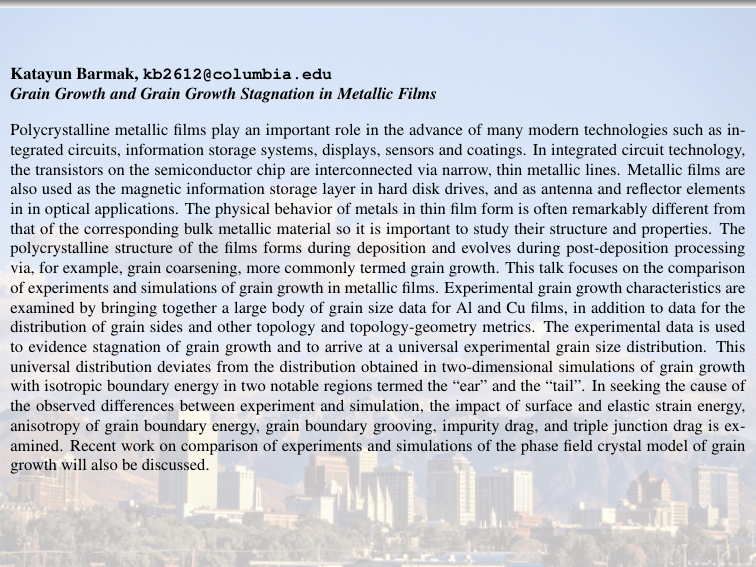Grain Growth and Grain Growth Stagnation in Metallic Films
advertisement

Katayun Barmak, kb2612@columbia.edu Grain Growth and Grain Growth Stagnation in Metallic Films Polycrystalline metallic films play an important role in the advance of many modern technologies such as integrated circuits, information storage systems, displays, sensors and coatings. In integrated circuit technology, the transistors on the semiconductor chip are interconnected via narrow, thin metallic lines. Metallic films are also used as the magnetic information storage layer in hard disk drives, and as antenna and reflector elements in in optical applications. The physical behavior of metals in thin film form is often remarkably different from that of the corresponding bulk metallic material so it is important to study their structure and properties. The polycrystalline structure of the films forms during deposition and evolves during post-deposition processing via, for example, grain coarsening, more commonly termed grain growth. This talk focuses on the comparison of experiments and simulations of grain growth in metallic films. Experimental grain growth characteristics are examined by bringing together a large body of grain size data for Al and Cu films, in addition to data for the distribution of grain sides and other topology and topology-geometry metrics. The experimental data is used to evidence stagnation of grain growth and to arrive at a universal experimental grain size distribution. This universal distribution deviates from the distribution obtained in two-dimensional simulations of grain growth with isotropic boundary energy in two notable regions termed the “ear” and the “tail”. In seeking the cause of the observed differences between experiment and simulation, the impact of surface and elastic strain energy, anisotropy of grain boundary energy, grain boundary grooving, impurity drag, and triple junction drag is examined. Recent work on comparison of experiments and simulations of the phase field crystal model of grain growth will also be discussed.




